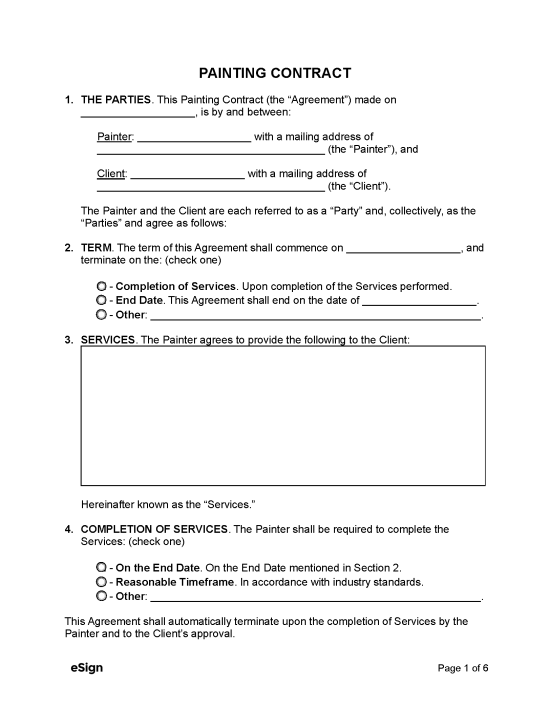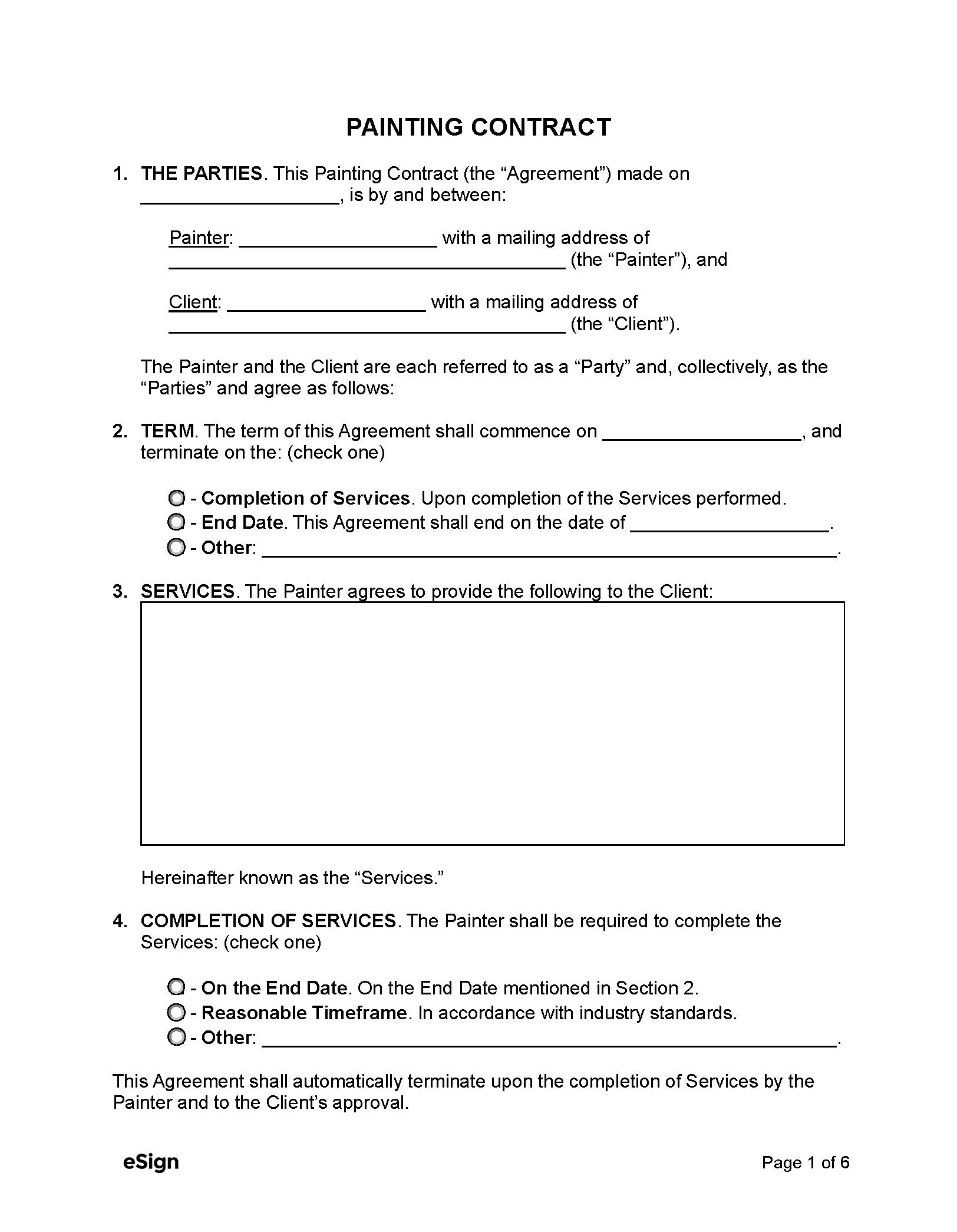Commonly Used For
- Interior/exterior painting
- Staining
- Structural steel painting
- Residential painting
- Commercial painting
- Restoration
- Paint removal
- Graffiti coverup
Important Clauses
- Project scope – The extent of the services the painter will provide to the client.
- Contract dates – The effective date, when the painter will start, and if there is a deadline for completion.
- Parties information – The full names and addresses of the painter and the client.
- Payment – The amount to be paid to the painter and when payment will be received.
- Independent contractor status – A provision establishing the painter as an independent contractor and not an employee.
Sample
Download: PDF, Word (.docx), OpenDocument
PAINTING SERVICE CONTRACT
1. THE PARTIES. This Painting Contract (the “Agreement”) made on [MM/DD/YYYY] (the “Effective Date”) is by and between [CONTRACTOR NAME], with a mailing address of [CONTRACTOR ADDRESS] (the “Contractor”), and [CLIENT NAME], with a mailing address of [CLIENT ADDRESS] (the “Client”).
2. TERM. The term of this Agreement shall commence on [MM/DD/YYYY] and terminate on the date of [MM/DD/YYYY].
3. SERVICES. The Contractor agrees to provide the following: [DESCRIBE SERVICES TO BE PERFORMED]. Hereinafter known as the “Services.”
4. PAYMENT AMOUNT. The Client agrees to pay the Contractor $[RATE]/Hour for the Services.
Hereinafter known as the “Compensation.”
5. PAYMENT METHOD. The Client shall pay the Compensation every week, beginning on [MM/DD/YYYY].
6. INDEPENDENT CONTRACTOR STATUS. The Contractor, under the code of the Internal Revenue Service (IRS), is an independent contractor and neither the Service Provider or their employees or contract personnel are, or shall be deemed, the Client’s employees.
7. ADDITIONAL TERMS AND CONDITIONS. [ADD ADDITIONAL INSTRUCTIONS, TERMS, CONDITIONS].
IN WITNESS WHEREOF, the Parties hereto agree to the above terms and have caused this Agreement to be executed in their names.
Client’s Signature: _________________________ Date: _______________
Printed Name: _________________________
Contractor’s Signature: _________________________ Date: _______________
Printed Name: _________________________

